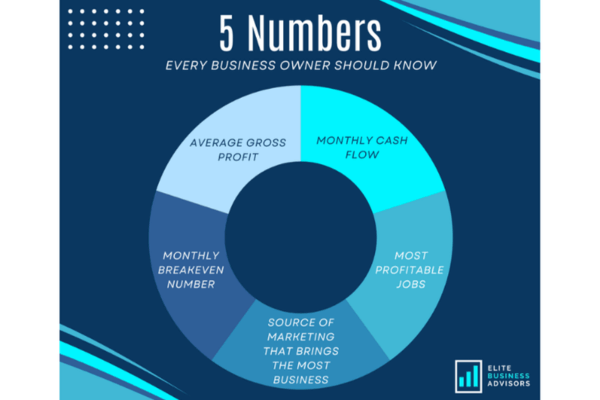PCA Articles

The 5 Numbers You Should Know in Your Painting Business
In business, there are so many KPI’s, Key Performance Indicators, that you could look at to evaluate the performance and health of your business. For many business owners this can get overwhelming as you hear people talk about Net Promoter Score, Gross Margin, Revenue, Sales, and countless other categories. This gets even more overwhelming for painting contractors that are still in the field working each day to try and compile countless statistics that may or may not tell a story of what’s going on in your business. Our mission is to not only help painting contractors treat their business like a business, but also to help simplify business down to foundational principles. We’ve simplified these data points down to the 5 most important you need to know for your business.
Average Gross Profit Margin
My good friend Nick Slavik once said “Job Costing leads you down a path of 15 more questions about your business.” Understanding your Gross Profit Margin on each of your projects helps you get real time feedback on if your pricing model works as well as if your crews are working efficiently. Knowing this number also allows you to plan out your months to help identify your Breakeven Number (see below).
Monthly Net Cashflow (Profit)
Have you ever job costed out a month and felt good about it until you stopped to further calculate what you paid yourself, what your overhead was, and the amount you set aside for taxes? The true measure of your financial health of your company should be viewed after all these expenses (or money outflow activities) are factored in. Keep in mind that all numbers should be viewed on a production by month basis for accuracy of financial health, not money in/money out like a profit and loss will show. Money is only made in the industry for jobs produced, not deposits collected!
Monthly Breakeven Number
Many times, when clients come to us with financial problems, it’s not because their jobs aren’t profitable or they aren’t charging enough, it’s often because they aren’t scheduling and producing enough work each month to cover all of the expenses and money outflow mentioned above. When you know your numbers, you can work the math backwards to determine what your minimum production revenue goal should be each month to ensure you pay yourself what you want, and the company is making a profit.
Most Profitable Job Types
Have you ever had a gut feeling that you shouldn’t take on a type of project, but didn’t have any data to back it up? If you do your job costing for each project and label it what kind of project it was (interior, exterior, kitchen cabinet, deck staining, etc.) you will start to notice trends on what jobs perform better than others. Having concrete data like this helps you make better decisions about what jobs you should take on and which ones you shouldn’t!
Marketing ROI and Statistics
It’s easy to throw money at many different marketing sources to help generate leads for your business. Tracking each estimate you complete and labeling it with the source of how you got the lead will help you understand which paid avenues are giving you the most bang for your buck and also uncover which marketing sources are best for your closing rate. For example, I can look back at the years in which I was running Elite Painting to see that estimates which came from previous customers, referrals or networking we closed 76.9% of. Compare that to a 51.2% closing rate on the traditional marketing channels (lawn signs, neighbors, social media, online, etc.) This helped us make decisions to focus more on driving leads through the previous customers, referrals and networking channels to increase our efficiency of estimates needed to reach our goals.
It’s one thing to get the numbers, it’s another thing to understand what’s good or bad for your business. While some of these numbers might be dependent upon your specific situation (like a breakeven number or gross profit margin target based on your niche) lean into your peers and others throughout the PCA community and painting industry to get a deeper understanding on how to use this data to make decisions about your business. Any time you need to make a decision in your business, refer back to 1 (or more) of these 5 data points to help you make the best educated decision you can!